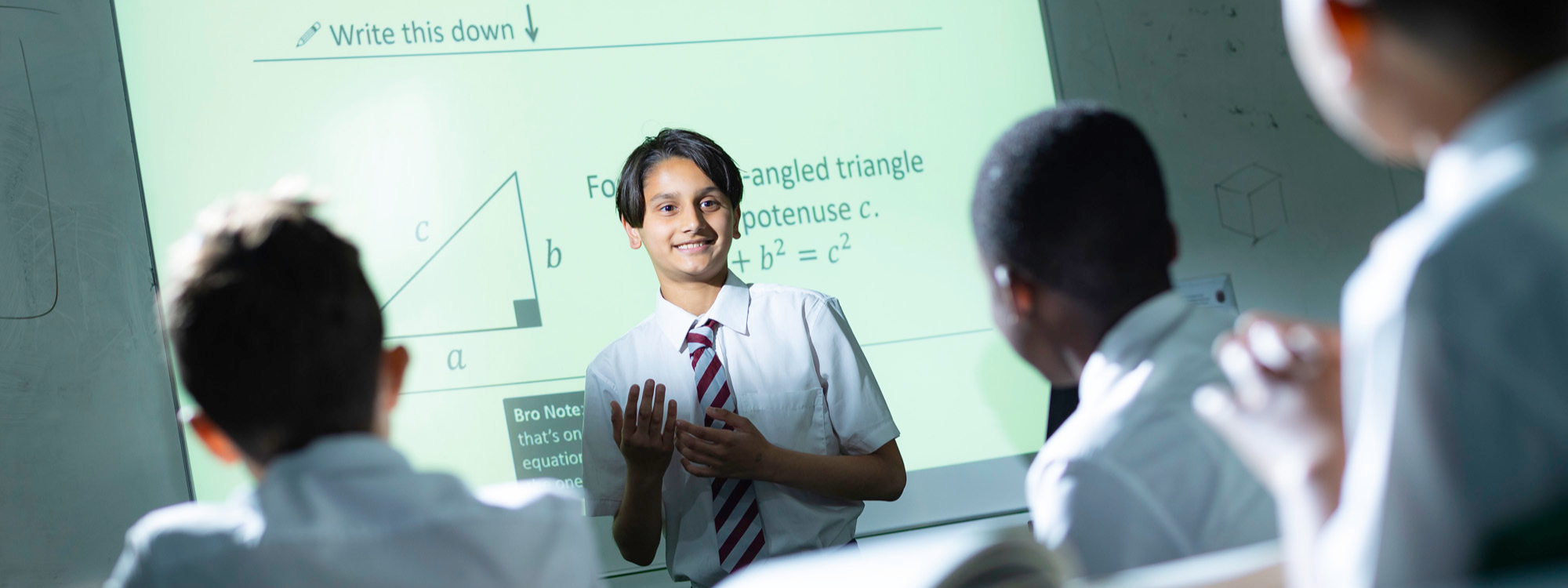Maths & Computing
BackMaths
Department description
Years 7 and 8
The aim is to build confidence by teaching the content in a logical order. This will inspire curiosity and enjoyment in Mathematics while also introducing our students to the rigour that will be required at GCSE. We also offer students the opportunity to widen their experience of STEM (Science, Technology, Engineering and Mathematics) and financial studies through some of the units.
Years 9 and 11
The curriculum aims to prepare students for academic success at GCSE and to provide a wide range of transferable skills for further education, employment and independence. The GCSE is made up of five strands: number, algebra, ratio and proportion, geometry and data handling.
Years 12 and 13
A Level Mathematics
Mathematics at A Level consists of modules in Pure Mathematics, Statistics and Mechanics. Pure Mathematics involves the study of calculus, coordinate geometry, trigonometry, algebra and polynomials amongst other things. Statistics looks at the representation of data, probability, discrete random variables, bivariate data and hypothesis testing. Mechanics looks at forces, equilibrium of a particle, kinematics of motion in a straight line, Newton’s laws of motion and linear momentum.
A Level Further Maths
Mathematics at A Level consists of modules in Pure Mathematics, Statistics and Mechanics. Pure Mathematics involves the study of calculus, coordinate geometry, trigonometry, algebra and polynomials amongst other things. Statistics looks at the representation of data, probability, discrete random variables, bivariate data and hypothesis testing. Mechanics looks at forces, equilibrium of a particle, kinematics of motion in a straight line, Newton’s laws of motion and linear momentum.
Computer Science
Department description
Computer Science is the fourth science. The government is now encouraging every good school to offer Computer Science as part of their curriculum, from Primary school onwards. As it is a recognised contributor to the English Baccalaureate.
Computer Science is educationally important. Just as we give every student the opportunity to learn the workings of physics, chemistry and biology because they live in a physical, chemical and biological world, so should we offer every student the opportunity to learn the workings of the digital systems that pervade their world.
This knowledge is empowering, enriching and inspiring; the skills involved are transferable. Writing a computer program, while seemingly esoteric, is the closest a child can come to thinking about thinking. Likewise, debugging a program is the closest one can come to learning learning. Amongst other things, Computer Science embodies logic, rigour and problem solving. Some commentators have dubbed it “the new Latin”.
At key stage 4, computer science is an option that many of our students opt for. It has proved popular with students who have a strong mathematical interest. This is a course that has real relevance to the modern world. While learners will no doubt already have some knowledge of computers and related areas, the course will give them an in depth understanding of how computer technology works. As part of this, they will investigate computer programming, which many learners find interesting.
At A Level students have the option to study Computer Science. The students will complete the full A Level course across the two years. This has 3 components; the first component is examined using a computer and the second component is a written examination. In addition, students will complete the third component which is the coursework element. For this part the student has to find a real problem to solve.
The department runs a range of extra-curricular clubs ranging from Lego Mindstorms to working with Net Gadgeteer. These are well attended clubs. Also the department has an outreach program where students from year 12 run programming clubs at local primary schools at the end of the day. The students work in pairs and are assigned to a local primary school where they teach programming and problem solving to young students.

